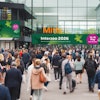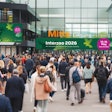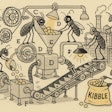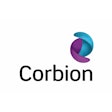
Fresh meat in dry pet foods remain a strong trend in dog and cat foods in markets worldwide. The twin trends of humanization and premiumization drive pet owners to seek kibble made with ever higher levels of fresh meat added to the extruder during production. While high fresh meat levels in pet food can challenge formulators and may strain ecosystems, scientists did observe amino acid availability differences among kibbles made with fresh meat, meat meats or a combination of the two.
Using laboratory analysis, University of Perugia researchers observed the differences in amino acid levels, fats and digestibility among three kibble formulations made by an Italian pet food maker. The recipes were equivalent, except in the form of the protein source. One recipe used only fresh chicken meat. Another kibble used chicken meal made from necks, wings and legless carcasses. The third used a combination of the two. All were processed and extruded in the same way otherwise.
“The results show that dry pet food consisting only of chicken fresh meats has the highest content of soluble protein,” the scientists wrote in the journal Animals. “It also contains more essential amino acids, branched-chain amino acids and taurine, as well as a greater quantity of monounsaturated and polyunsaturated fatty acids. In addition, its in vitro digestibility was the highest, exceeding 90% of its dry weight, in agreement with the soluble protein content. These findings thus make the fresh-meat-based formulation a preferable choice as dry pet food.”
Essential amino acids in pet food
Digestibility was similar among formulations, although the fresh meat kibble was somewhat higher. Differences emerged in the levels of essential amino acids. The fresh-chicken kibble had 20.6 grams of amino acids per 100 grams dry pet food. The blended formulation had 18.2 grams, and the chicken meal kibble had 17.9 grams of amino acids per 100 grams dry pet food.
According to results of the in vitro experiment, the fresh chicken meat formulation held the highest concentration for most essential amino acids and branched-chain amino acids, the lack of which can cause health problems for pets. Fresh meat pet foods contained taurine at higher levels than the other formulations. Lack of taurine can cause serious problems in cat foods, since the obligate carnivores can’t synthesize it themselves. Taurine was also mentioned in the context of dog food, during U.S. Food and Drug Administration's investigation into canine dilated cardiomyopathy.
The amino acid arginine was highest in fresh meat kibble, as well. That amino acids works with glycine and methionine to make creatine in pets’ bodies, and eventually form energy-giving molecules that allow cells to function. Along with that essential function, arginine helps decrease systolic pressure, prevents platelet aggregation, has tumoricidal and bactericidal effects and neurotransmitter functions, promotes wound healing, and induces the release of dopamine, and its systemic administration increases the levels of some plasma molecules, such as insulin, glucagon and prolactin, according to the University of Perugia researchers.
Along with arginine, levels of histidine, isoleucine, leucine and valine were all significantly higher in fresh meat kibble.

















